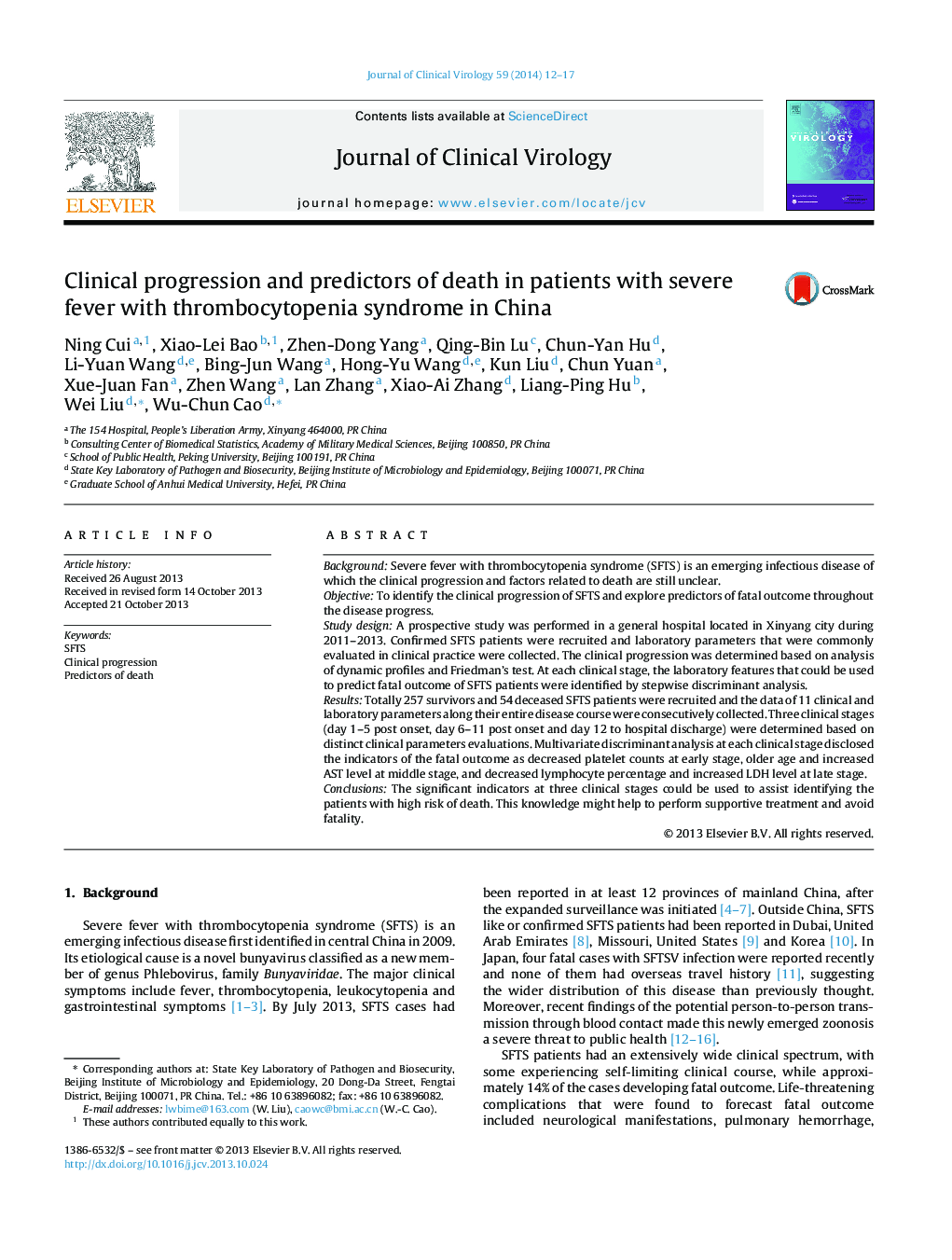| Article ID | Journal | Published Year | Pages | File Type |
|---|---|---|---|---|
| 3369022 | Journal of Clinical Virology | 2014 | 6 Pages |
BackgroundSevere fever with thrombocytopenia syndrome (SFTS) is an emerging infectious disease of which the clinical progression and factors related to death are still unclear.ObjectiveTo identify the clinical progression of SFTS and explore predictors of fatal outcome throughout the disease progress.Study designA prospective study was performed in a general hospital located in Xinyang city during 2011–2013. Confirmed SFTS patients were recruited and laboratory parameters that were commonly evaluated in clinical practice were collected. The clinical progression was determined based on analysis of dynamic profiles and Friedman's test. At each clinical stage, the laboratory features that could be used to predict fatal outcome of SFTS patients were identified by stepwise discriminant analysis.ResultsTotally 257 survivors and 54 deceased SFTS patients were recruited and the data of 11 clinical and laboratory parameters along their entire disease course were consecutively collected. Three clinical stages (day 1–5 post onset, day 6–11 post onset and day 12 to hospital discharge) were determined based on distinct clinical parameters evaluations. Multivariate discriminant analysis at each clinical stage disclosed the indicators of the fatal outcome as decreased platelet counts at early stage, older age and increased AST level at middle stage, and decreased lymphocyte percentage and increased LDH level at late stage.ConclusionsThe significant indicators at three clinical stages could be used to assist identifying the patients with high risk of death. This knowledge might help to perform supportive treatment and avoid fatality.
